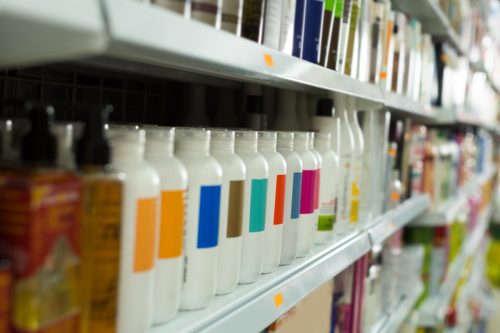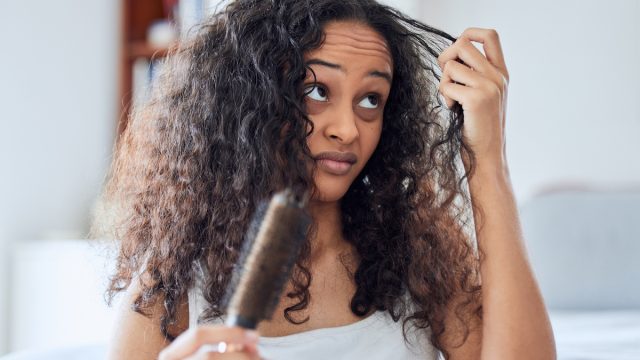If You're Using Any of These Toxic Hair Products, Stop Now, FDA Warns
One chemical has been linked to uterine cancer.
One of the main responsibilities of the Food and Drug Administration is to protect public health by ensuring the safety, efficacy, and security of human and veterinary drugs, biological products, and medical devices. The agency also ensures the safety of the nation's food supply, cosmetics, and products that emit radiation. Recently, the FDA proposed a ban on a main ingredient in a popular hair treatment. Here is what you need to know about it.

The FDA proposed a ban on using formaldehyde as an ingredient in hair relaxers, a popular product and treatment for Black women who straighten their hair.

Per an FDA fact sheet, they currently discourage people from using hair-straightening products that contain formaldehyde and similar ingredients.

The new proposed rule would ban formaldehyde in hair-smoothing or hair-straightening products.

"These chemicals are used in certain cosmetic products that are applied to human hair as part of a combination of chemical and heating tool treatment intended to smooth or straighten the hair," the FDA writes.

"Use of hair smoothing products containing FA and FA-releasing chemicals is linked to short-term adverse health effects, such as sensitization reactions and breathing problems, and long-term adverse health effects, including an increased risk of certain cancers," they say.

According to a study published last year by the National Institutes of Health, women who used hair-straightening chemicals an excess of four times in the previous year were more than twice as likely to develop uterine cancer compared to those who didn't use the products.

"We estimated that 1.64% of women who never used hair straighteners would go on to develop uterine cancer by the age of 70; but for frequent users, that risk goes up to 4.05%," said Alexandra White, Ph.D., head of the NIEHS Environment and Cancer Epidemiology group and lead author on the new study. "This doubling rate is concerning. However, it is important to put this information into context – uterine cancer is a relatively rare type of cancer."
RELATED: 11 Easy Things You Can Do to Slow Down Aging

"We know that these products are very poorly regulated by the federal government in terms of what goes in there," Kimberly Bertrand, an associate professor of medicine at Boston University School of Medicine, who conducted another study published this month about the increased risk of uterine cancer linked to the products. "You can't look at an ingredient label and know that it contains these endocrine disruptors. They don't list phthalates and parabens on the box — they say fragrance and preservative. So women don't really know what they're being exposed to."






















